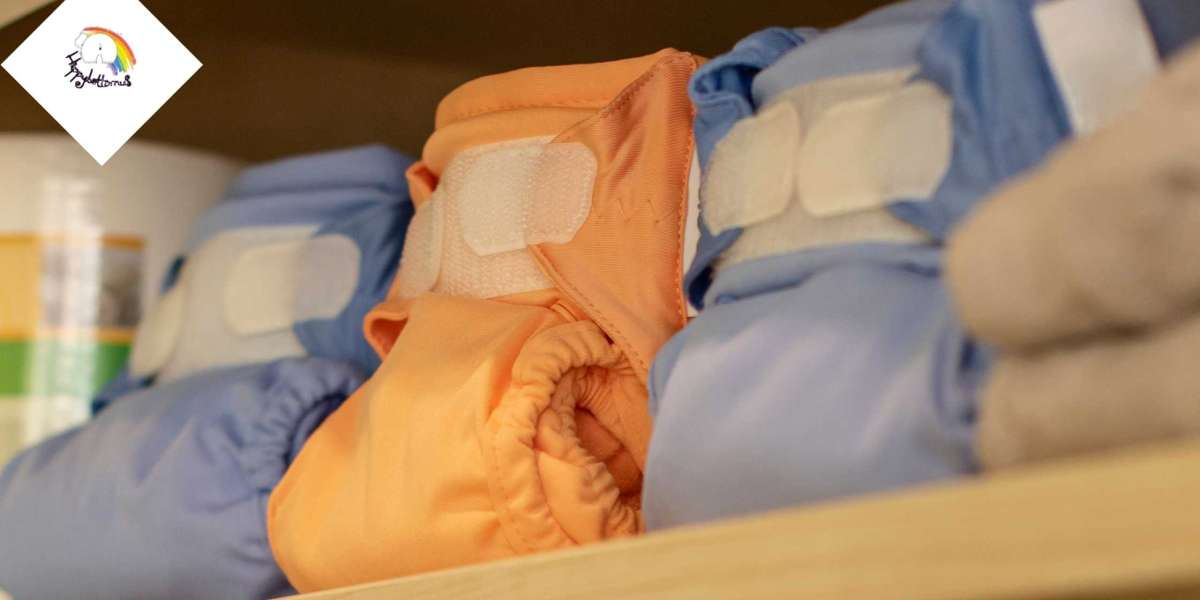As parents, we all want the best for our babies—and the planet they will inherit. Cloth diapers have emerged as a top choice for families seeking a balance between environmental responsibility, cost savings, and gentle care for their little ones. In this blog, we’ll dive into the world of cloth diapers, exploring their benefits, types, and practical tips to get started.
What Are Cloth Diapers?
Cloth diapers are reusable diapers made from a variety of soft, absorbent fabrics. Unlike disposable diapers that are designed for single use, cloth diapers can be washed and reused multiple times. Modern cloth diapers are not only eco-friendly but also come in stylish designs and advanced features, making them convenient and appealing for today’s parents.
Benefits of Cloth Diapers
Environmentally Friendly:
Disposable diapers take hundreds of years to decompose and contribute significantly to landfill waste. Cloth diapers reduce this environmental impact, making them a sustainable choice for eco-conscious families.Cost-Effective:
While the initial investment in cloth diapers may seem high, the long-term savings are undeniable. Families can save thousands of dollars by reusing cloth diapers instead of buying disposables.Gentle on Baby’s Skin:
Made from natural and breathable fabrics, cloth diapers are free from harmful chemicals often found in disposables. They help reduce diaper rash and keep your baby comfortable.Customizable Fit:
With adjustable sizes and snaps, modern cloth diapers provide a snug and leak-proof fit, ensuring your baby stays dry and happy.Stylish and Fun:
From vibrant prints to cute patterns, cloth diapers add a touch of personality to your baby’s wardrobe.
Types of Cloth Diapers
Modern cloth diapers are designed for convenience and versatility. Here are the most popular types:
All-in-One (AIO) Diapers:
These diapers combine an absorbent layer and waterproof cover in one piece, making them easy to use—perfect for busy parents.Pocket Diapers:
Featuring a pocket for removable inserts, these diapers allow you to adjust absorbency based on your baby’s needs.Prefolds and Covers:
A budget-friendly option, this setup involves folding an absorbent prefold and securing it with a waterproof cover.Fitted Diapers:
These are highly absorbent and require an additional waterproof cover, making them ideal for nighttime use.Hybrid Diapers:
A combination of reusable and disposable features, hybrids allow for a cloth shell with the option of disposable inserts.
How to Get Started with Cloth Diapers
Choose the Right Type:
Consider your baby’s needs and your lifestyle to decide which type of cloth diaper works best.Build Your Stash:
Start with at least 20–25 diapers to ensure you have enough between washes.Learn Washing Basics:
- Rinse diapers immediately after use.
- Wash every 2–3 days with a baby-safe detergent.
- Avoid fabric softeners, as they can reduce absorbency.
Use Liners for Convenience:
Liners catch solids, making cleanup easier and protecting the diaper from stains.Experiment and Adapt:
It might take some time to figure out the best fit, inserts, and washing routine for your baby. Be patient and adapt as needed.
Addressing Common Concerns
- Leaking: Ensure the diaper fits snugly around the legs and waist. Adding extra inserts can increase absorbency for heavy wetters.
- Smell: Proper washing and drying are key to preventing odors. Sun-drying also helps naturally deodorize and sanitize.
- Stains: Sunlight is a natural stain remover! Lay washed diapers in direct sunlight for a few hours.
Why Make the Switch?
Cloth diapers are more than just a parenting trend—they represent a commitment to sustainability and healthier choices for your baby. By choosing cloth diapers, you’re reducing waste, saving money, and giving your child the comfort of natural fabrics.
Final Thoughts
Switching to cloth diapers may seem like a big step, but with a little preparation, it can be a rewarding and eco-friendly journey. Modern cloth diapers are designed with busy parents in mind, offering convenience without compromising on style or sustainability. Embrace the change and join a growing community of parents making a positive impact—one diaper at a time!













